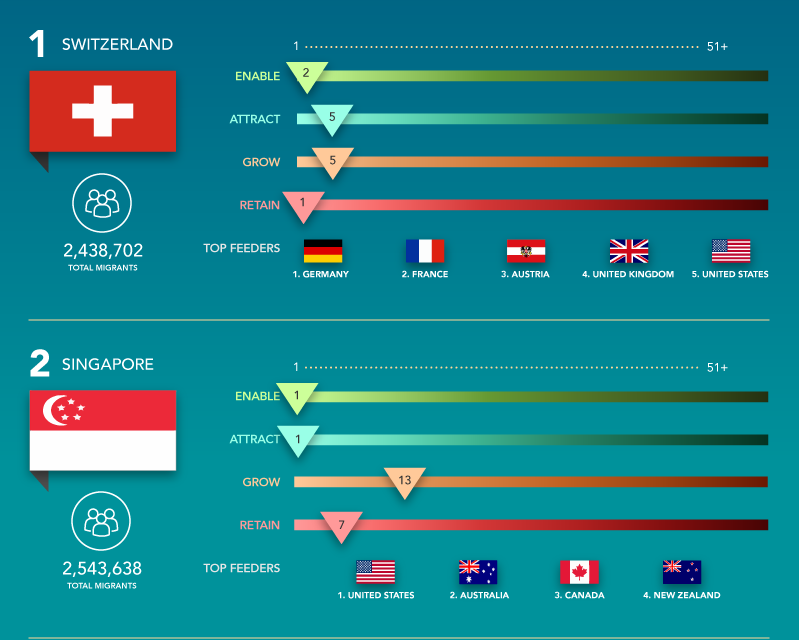(Editor’s note: This piece on international talent was originally posted on the KDM Engineering website and is reposted here with the permission of the company.)
Do you have a particular set of skills? If so, you should have no shortage of suitors. Highly skilled workers are in demand, worldwide. And many countries make substantial efforts to compete for top talent.
We analyzed data from the United Nations (UN) and the Global Talent Competitiveness Index (GTCI), to understand how countries compete for talent (and which ones do it best). Below we visualize findings from the GTCI to compare the top 25 countries when it comes to attracting and retaining talent.
In addition to visualizing the GTCI findings, we also used UN data to help people understand which countries on the list attract highly skilled workers from their competitors. We’ve identified these countries as “top feeders.”
Number one on the most competitive list is Switzerland. They rate highly on all four factors that exemplify a go-to destination for highly skilled workers: ability to enable, attract, grow, and retain. It’s no surprise, too, that Switzerland receives the majority of its skilled workers from nearby European nations. Germany heads the list; France and the UK also contribute. The United States, notably, isn’t a top feeder to Switzerland.
Conversely, the least competitive country, Israel, struggles mightily in two of the four factors: to attract and grow. Interestingly, though, they’re merely middle of the pack—not awful—in the other two factors, to retain and enable. And when Israel does receive highly skilled migrants, unlike Switzerland, they’re typically from the United States.
Other countries on the list, like Luxembourg, exhibit high-variance ratings in the four factors. Luxembourg, the seventh-rated country for skilled migrants overall, principally rates high in its ability to attract and retain. But when it comes to enabling the workers it has attracted, or growing the workers it has retained, Luxembourg’s ratings are decidedly mediocre.
Qatar and Japan, rated number 21 and 22, respectively, follow an even higher-variance pattern. Qatar, for example, is tremendous at attracting skilled workers—one of the best of all 25 countries. But it’s so bad at growing those skills that its relatively low growth rating hinders its overall score. Japan, similarly, rates highly in its ability to enable but struggles in its ability to attract, and that high variance keeps it low overall in its highly skilled appeal.
Western stalwarts Germany, the United States, France, and the UK lead the way in feeding highly skilled workers to welcoming countries. For the lowdown on all the destinations that interest highly skilled workers, and more information on the data, methods, and migrant patterns, check out the full graphic.
About KDM Engineering:
KDM Engineering is an engineering consulting firm located in Downtown Chicago. We were founded in 2008, upon a simple and achievable mission: to deliver outstanding support to clients and provide excellent customer service.





















